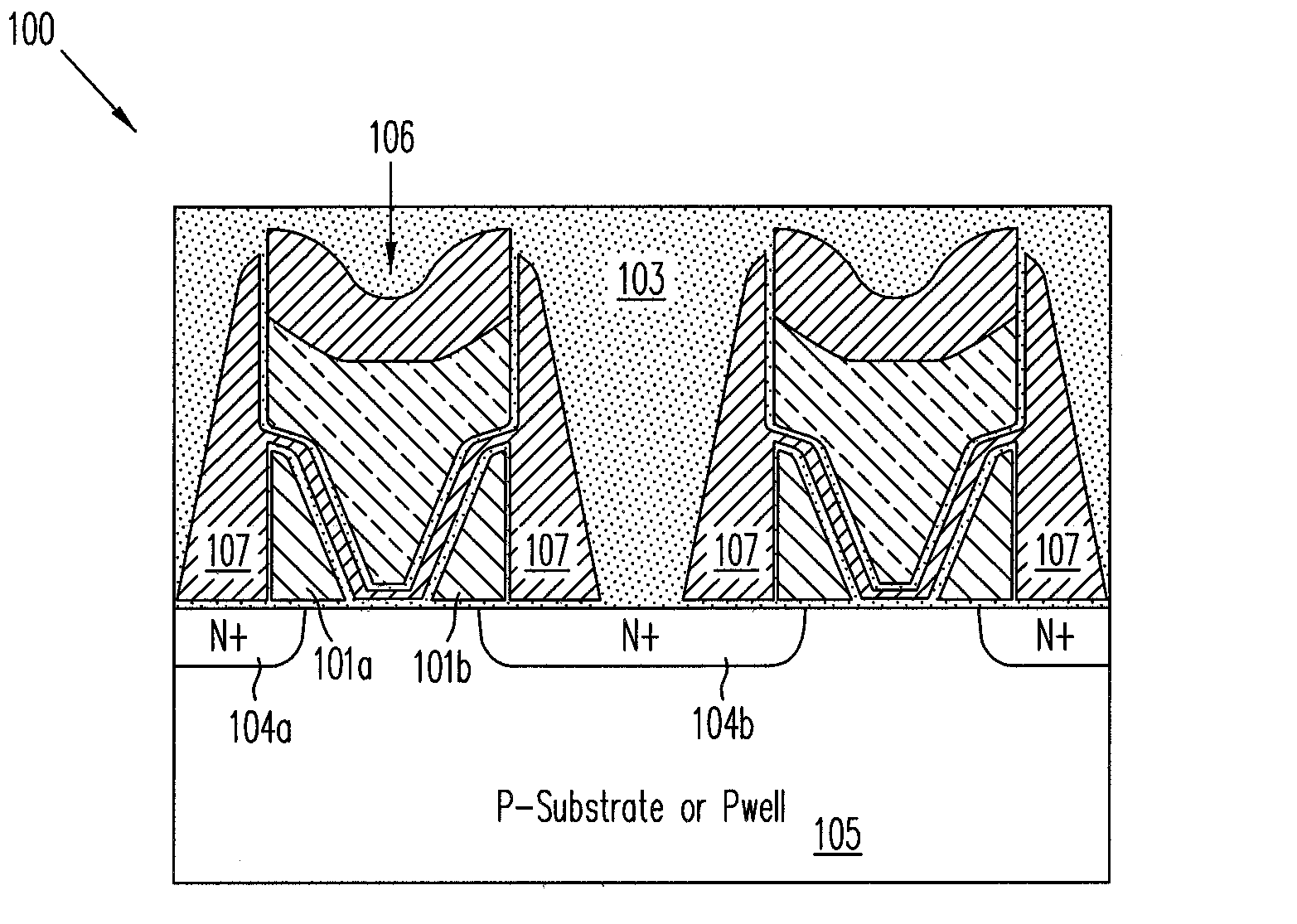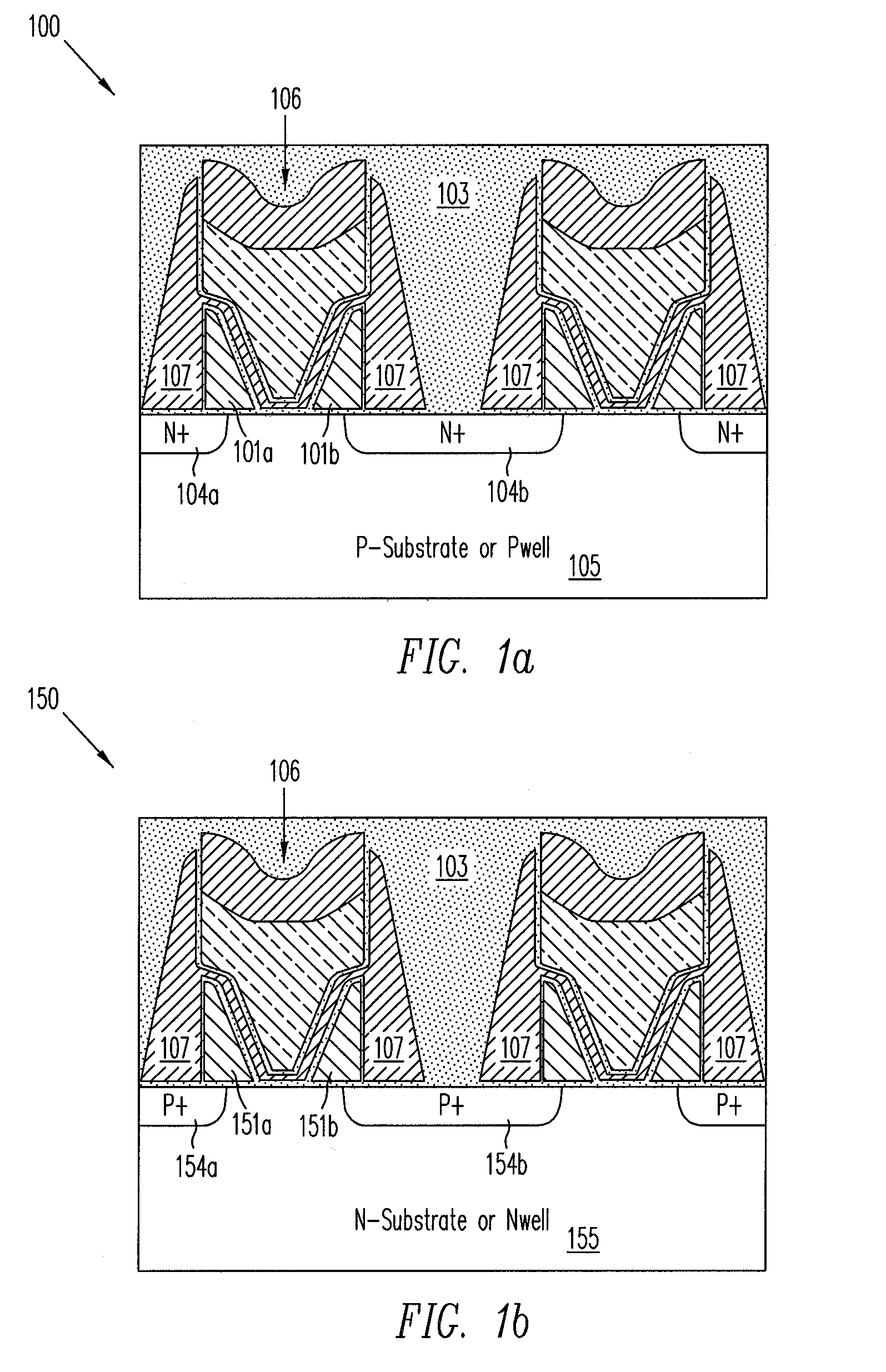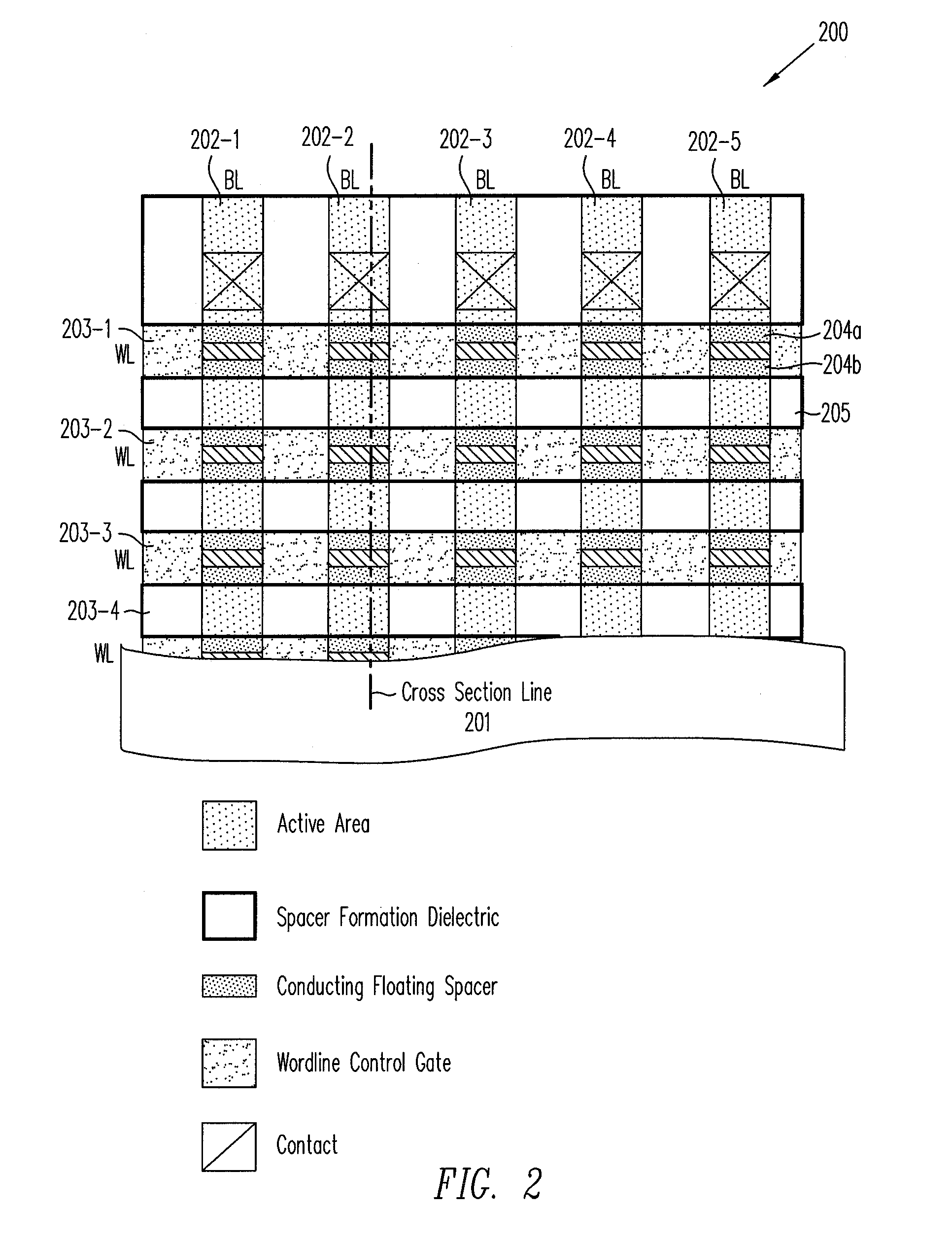Dual conducting floating spacer metal oxide semiconductor field effect transistor (DCFS MOSFET) and method to fabricate the same
a metal oxide semiconductor and field effect technology, applied in the field of semiconductor field effect transistors, can solve the problems of widening the threshold voltage distribution and mutual threshold voltage interference, and the inability of tunneling carriers to precisely inject carriers into the nitride trap area, so as to achieve good programming and erasing properties.
- Summary
- Abstract
- Description
- Claims
- Application Information
AI Technical Summary
Benefits of technology
Problems solved by technology
Method used
Image
Examples
Embodiment Construction
[0021]FIGS. 1(a) and 1(b) show cross-sections of dual conducting floating spacer NVM devices, for N-channel and P-channel devices, respectively, in NAND-type flash arrays, according to one embodiment of the present invention. FIG. 2 is a layout view of NAND-type array 200 of DCFS devices, such as those shown in FIG. 1(a) or FIG. 1(b), in accordance with one embodiment of the present invention. The cross-sections of FIG. 1(a) and FIG. 1(b) may be seen from the cross section line 201, depending on whether N-channel or P-channel devices are fabricated.
[0022]As shown in FIG. 1(a), conducting floating spacers 101a and 101b are made of conducting material residing on each side of MOSFET 100, surrounded by dielectric material 103. Charge may be stored in each of conducting floating spacers 101a and 101b, which slightly overlap source / drain electrode diffusion regions 104a and 104b on the sides of MOSFET 100. The two junctions located below floating spacers 101a and 101b are formed by heavy...
PUM
 Login to View More
Login to View More Abstract
Description
Claims
Application Information
 Login to View More
Login to View More - R&D
- Intellectual Property
- Life Sciences
- Materials
- Tech Scout
- Unparalleled Data Quality
- Higher Quality Content
- 60% Fewer Hallucinations
Browse by: Latest US Patents, China's latest patents, Technical Efficacy Thesaurus, Application Domain, Technology Topic, Popular Technical Reports.
© 2025 PatSnap. All rights reserved.Legal|Privacy policy|Modern Slavery Act Transparency Statement|Sitemap|About US| Contact US: help@patsnap.com



